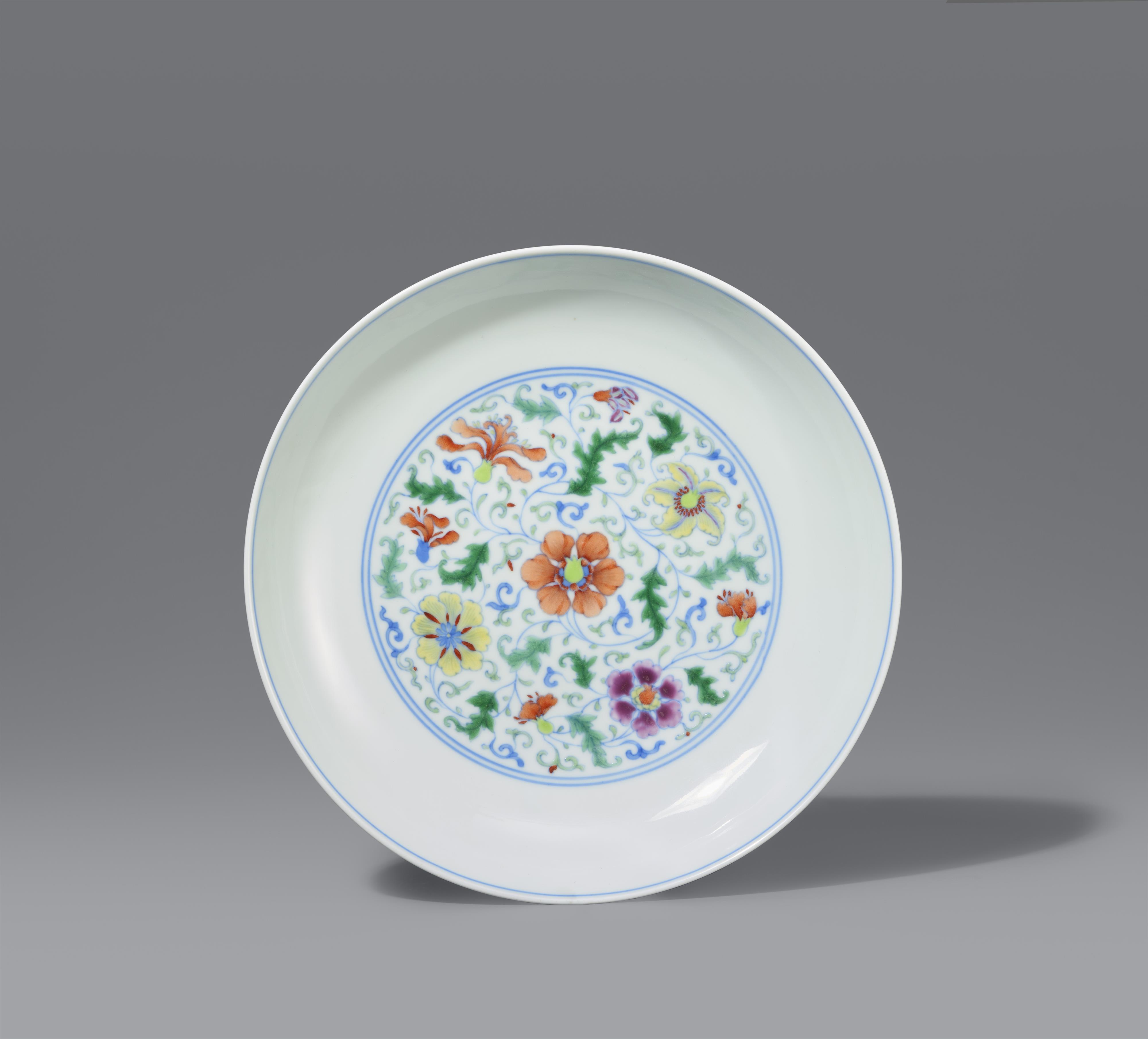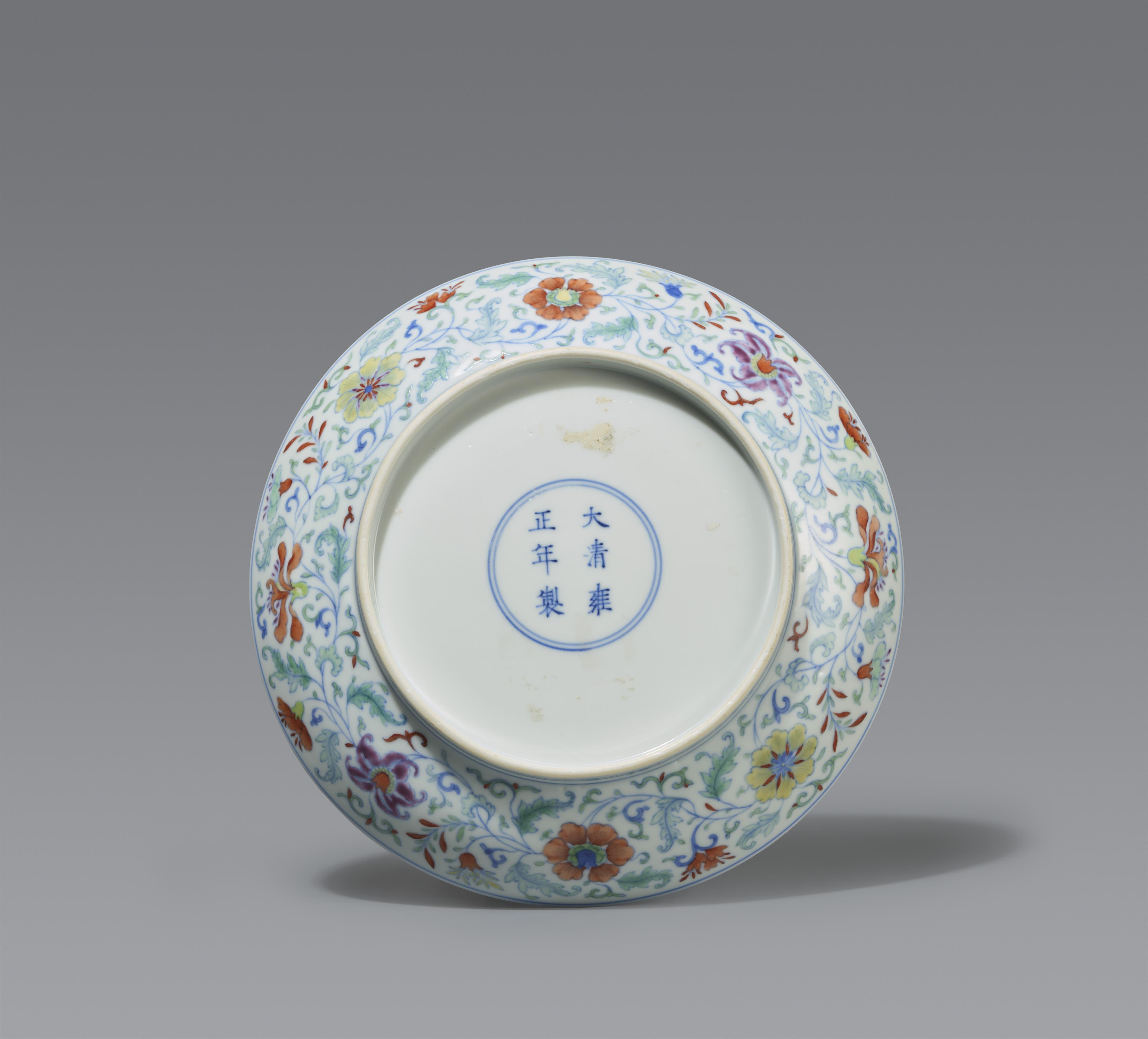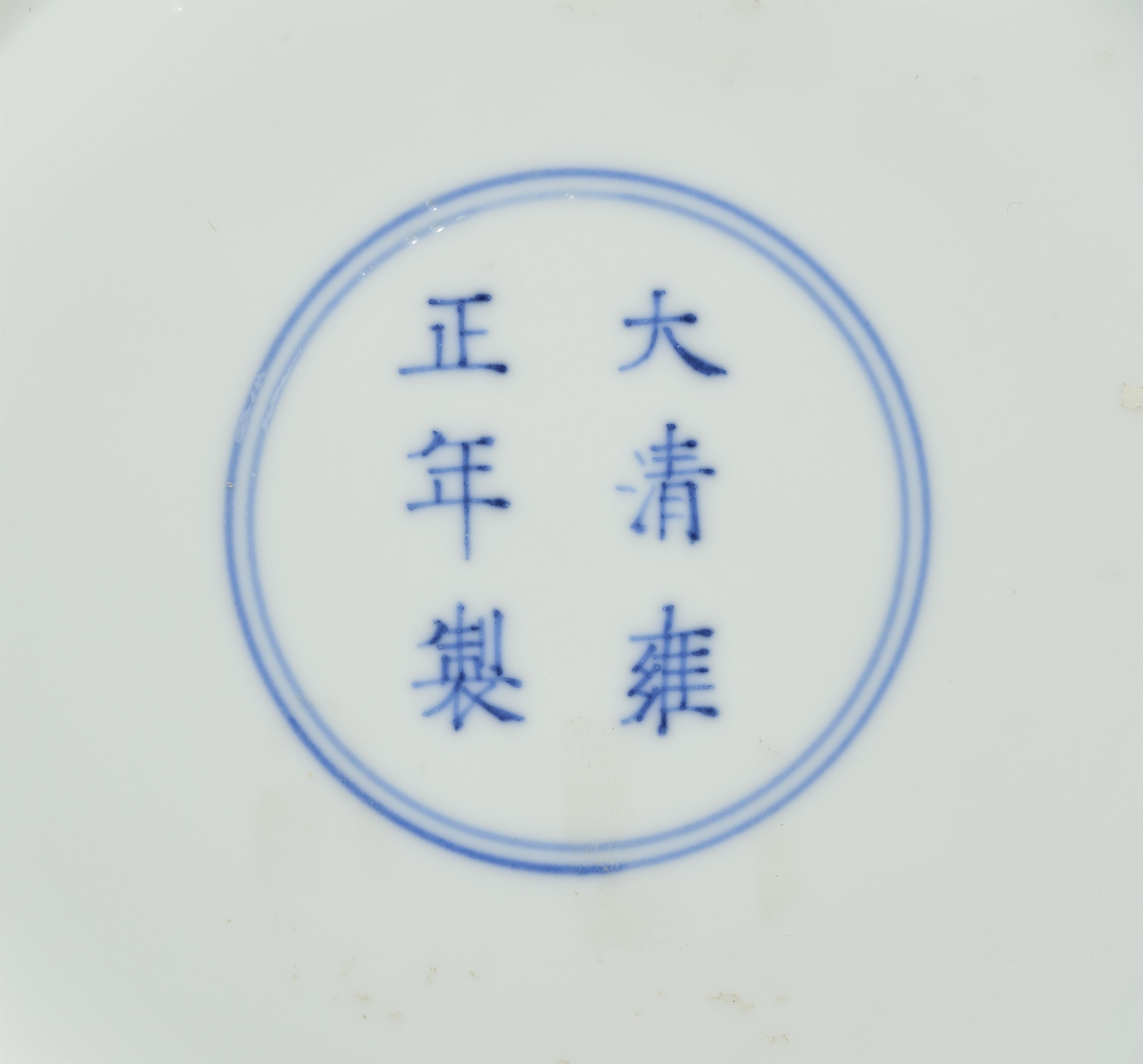A fine and rare imperial doucai floral medallion dish. Yongzheng period (1722–1735)
Yongzheng six-character mark in kaishu and of the period
Of saucer form with shallow flaring sides, the interior delicately painted in a widely ranging palette including purple, orange, iron-red, yellow, and green with an elaborate floral medallion with flowerheads, consisting of a peony, hibiscus, lotus, mallow and lilly, amidst flower buds, foliage and curled leaves, all delicately outlined in underglaze-blue and between a double underglaze-blue line border, the exterior decorated similarly.
Diameter 20.5 cm
The present plate is an outstanding example of the imperial porcelain art of the Yongzheng period (1722-1735). The porcelain painter has supplemented the classic colour palette of the legendary doucai models from the Chenghua period (1464-1487) of the Ming dynasty with further colours and shades, the production of which became possible in this period. The result is a colourful composition that combines flowers that actually bloom in nature at different times of the year.
The enamel colours were applied to the underglaze blue contours with the greatest care and precision, so that there are hardly any places where they have been painted over. The porcelain body consists of a very pure white body and is elegantly shaped.
The six-character imperial mark on the base is excellently written and corresponds in its vertical axis with the flowers on the outer wall.
The design is known from other doucai pieces of the Yongzheng period, such as a bowl in the Museum of East Asian Art in Bath. The present piece, however, seems to be the only one known so far in saucer dish form.
清雍正 罕見鬥彩花卉紋盤
「大清雍正年制」六字楷書款
此斗彩花卉紋盘為雍正年间(1722–1735) 御瓷艺术的杰出代表。
明代成化年间(1464-1487) 斗彩典范的经典配色在這位制瓷大师手中得以补充并被精确体现, 四季花卉融汇于色彩豐富的構圖之中。
此盘瓷体白净光潔, 胎壁极薄。底部六字雙行官窯款書寫工整, 中心軸処款識與外壁上下正中牡丹花相呼應。该款式曾出現在雍正时期的斗彩瓷器作品中, 例如珍藏在英國巴斯东亚艺术博物馆中的瓷碗。然而,这件斗彩花卉盤似乎是唯一一件已知的以盤的形式出現的作品。
來源: 北萊茵-威斯特法倫州, 此後由其家族傳承
可比: 巴斯東亞藝術博物館, 開幕展覽, 卷1, 《Chinese Ceramics》, 巴斯1993年, 253頁, 編號199
Provenance
Old private collection, North Rhine-Westphalia, and thence by descent
Literature
Compare a bowl with a similar decoration in The Museum of East Asian Art, Inaugural Exhibition, vol. I, Chinese Ceramics, Bath 1993, p. 253, no. 199






